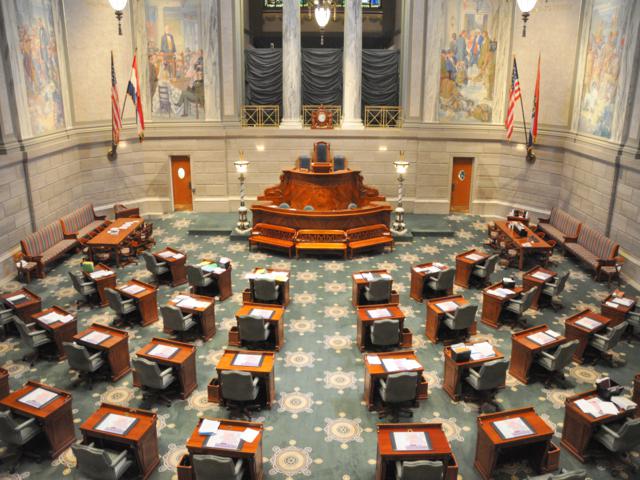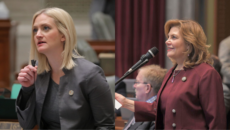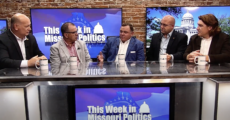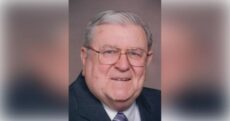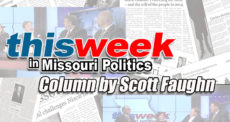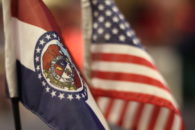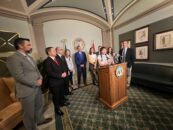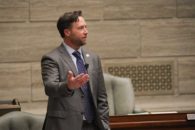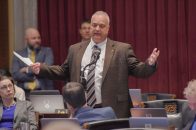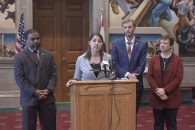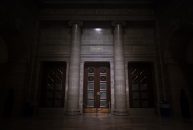As the House prepares to take up its own versions of the anti-crime legislation driving the special session, questions abound about what the Senate will ultimately receive — and just how the upper chamber will tackle those bills. Could we see a PQ?
Although just two letters, a PQ carries a lot of weight.
A PQ, “moving the previous question,” is a procedural move used to shut off debate on a bill. While it’s often used in the House, it’s a tactic seen much less in the Senate, a body that ardently values tradition and decorum.
“Forcing the end of a debate through a PQ is a hostile tactic often used in the lower chamber and should be avoided at all costs in the Senate,” Senate Minority Leader John Rizzo said. “If this nuclear option were to be used in the upper chamber, it would destroy the Senate’s ability to move forward on any other issue in this session or the next. The Senate prides itself on being the more pragmatic, thoughtful chamber.”
“The Senate is a more deliberative body than the House of Representatives. We are in favor of unlimited debate on the questions in order to reach compromises to make sure the legislation is well thought through before it makes its way to the governor’s desk,” Republican Sen. Tony Luetkemeyer said. “That being said, the counter-balance to the filibuster is the PQ.”
Rule 84 in the Senate states:
The previous question shall be in this form: “Shall the main question be now put?” It shall only be admitted on written demand of five senators, and sustained by a vote of a majority of the senators elected, and in effect shall be put without debate, and bring the senate to direct vote upon a motion to commit, if such motion shall have been made; and if this motion does not prevail, then upon amendments, and then upon the main question. On demand for the previous question, a call of the senate shall be in order, but after a majority of the senators elected have sustained such a motion, no call shall be in order prior to the decision on the main question.
It’s worth noting that while the rule only calls for five senators to sign onto the PQ, most Senate presidents have set their own custom, requiring even greater support before a PQ would be considered.
It was 1970 when a PQ was used in the Senate after a more than 100-year hiatus. Then-President Pro Tem Earl Blackwell stood steadfast against the governor’s call to raise income taxes. The Senate ultimately moved to PQ the motion, shutting off debate, and Blackwell’s leadership position came to an end as well.
Since, the PQ has been used about several dozen times successfully. It was used during the extraordinary session in 2017 to advance an abortion bill. And in the year prior, it was used to move a controversial “religious freedom” resolution, a measure that ultimately died in the House.
- July 2017: One successful motion on an abortion restrictions bill
- May 2017: Three successful motions on a minimum wage regulations bill
- September 2016: One successful motion on a voter identification bill; one successful motion on a concealed carry and firearm safety bill
- March 2016: Two successful motions on religious freedom legislation
- May 2015: Three successful motions on a right to work bill
- September 2014: One successful motion on an abortion waiting periods bill
- May 2007: Four successful motions on a resolution related to official state language; two successful motions on a sex education and abortion clinics bill
- April 2007: Three successful motions on a higher education initiatives bill; three successful motions on an appropriations bill
- May 2006: Five successful motions on a voting process revision bill
- May 2004: One motion attempted on a foster care bill
- April 2004: Three successful motions on a tort law revisions bill
- May 2003: One successful motion on a concealed carry permit bill
- May 1999: One successful motion on an abortion bill
- April 1982: Three successful motions on a busing bill
- May 1977: Two unsuccessful motions on a death penalty bill
- January 1972: Two successful motions on an unemployment regulations bill
- December 1970: Two successful, one unsuccessful motions on an income tax bill
Before 1970, several PQs were made in 1867 during an appropriations debate regarding Missouri’s exhibit for the Paris Exposition and the creation of a permanent school fund. Others were made regarding legislation on expanding the city limits of St. Louis, bond issues, and whether D.D. Burnes was entitled to his SD 3 seat.
“I think myself and most members of the Senate are very hesitant to use a PQ, and in most cases, any time we are able to reach a compromise and move legislation forward without a PQ, I think everyone certainly favors doing that,” Luetkemeyer said. “The times when a PQ would be appropriate are when you’re dealing with some type of deep partisan divide where it’s very clear that there is no negotiated settlement to be had, and the only way to move forward is to put the issue before the Senate to vote.”
As for using the parliamentary motion on the crime legislation, Rizzo said: “Using a PQ to bailout the governor for his terribly mismanaged session would be beneath the dignity of the Senate and its leaders.”
Cameron Gerber contributed to this report.

Kaitlyn Schallhorn was the editor in chief of The Missouri Times from 2020-2022. She joined the newspaper in early 2019 after working as a reporter for Fox News in New York City.
Throughout her career, Kaitlyn has covered political campaigns across the U.S., including the 2016 presidential election, and humanitarian aid efforts in Africa and the Middle East.
She is a native of Missouri who studied journalism at Winthrop University in South Carolina. She is also an alumna of the National Journalism Center in Washington, D.C.
Contact Kaitlyn at kaitlyn@themissouritimes.com.

